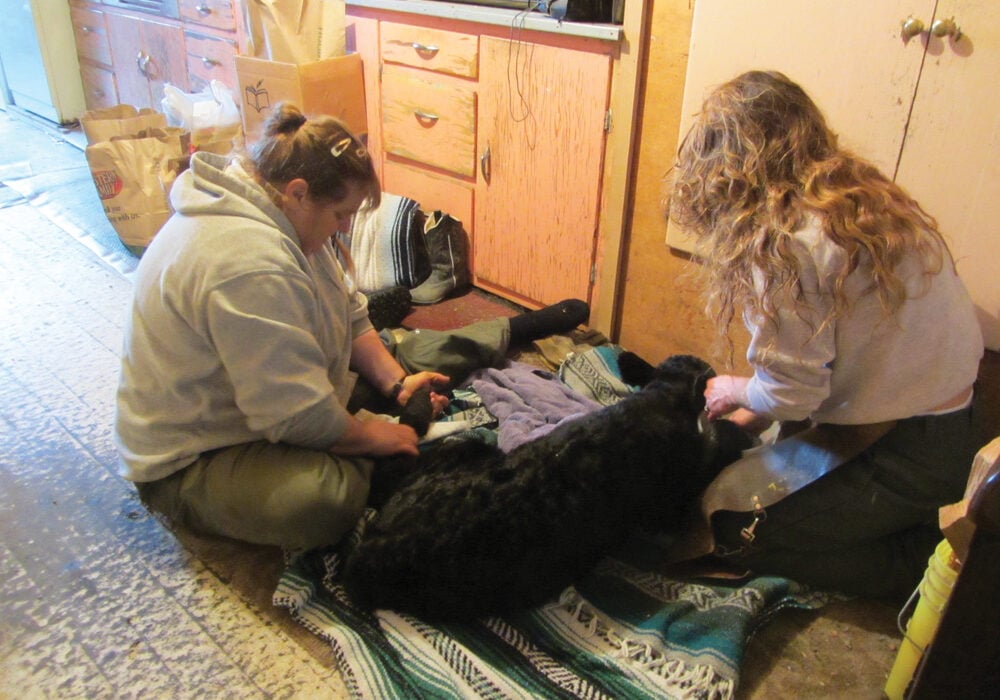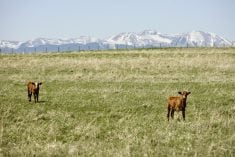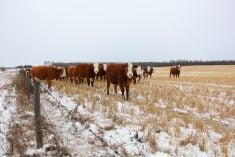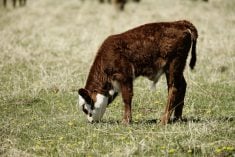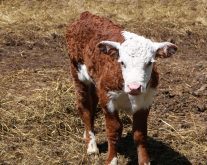Weak calf syndrome is a general condition rather than a specific disease, and can be caused by several different factors, sometimes multiple factors at the same time. The newborn calf is weak, unable or slow to rise, stand or nurse.
These calves often die within three days of birth. They are sometimes called “dummy calves” or “fading calves.” Usually there are no more than one or two of these calves born each year in a beef herd, but occasionally a herd experiences multiple losses. Preventive strategies can be challenging because the condition can be caused by many different factors, some of which are too late to correct for that calving season.
Read Also
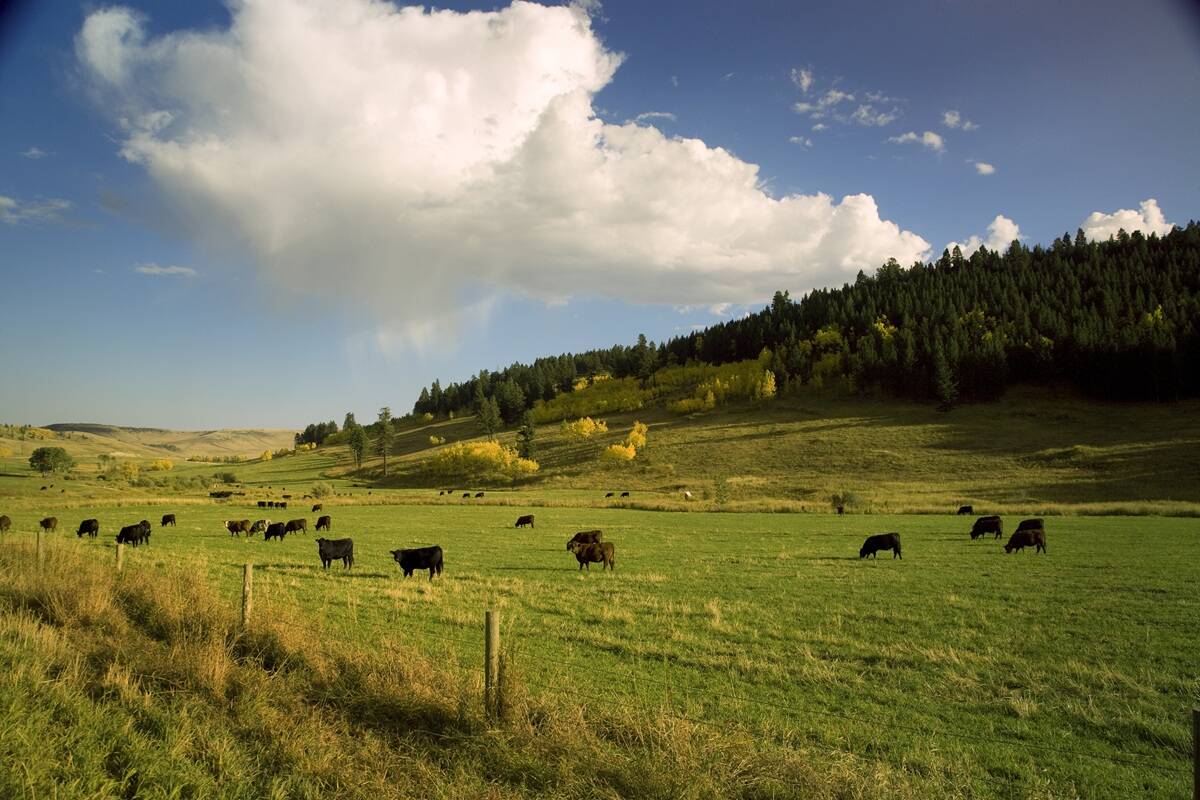
Are you a competitive supplier of weaned beef calves?
Beef farmers and ranchers need to strategically manage costs to achieve and maintain profitability.
Dr. Claire Windeyer, associate professor at the University of Calgary faculty of veterinary medicine, says there are two scenarios. One is the odd weak calf where you know what happened to cause the problem.
“Perhaps it was born in a snowstorm, or had a long hard birth, or some other obvious reason. The second scenario is a cluster of weak calves and you don’t know why,” she says.
For the one calf which you know the cause, it usually just needs basic care, such as warming it up, providing colostrum, helping it stand and nurse, etc. A herd problem can be much harder to figure out and deal with.
“Producers should call their veterinarian and get diagnostic help. All too often these cases are not fully investigated. The producer might say, ‘Oh shoot, we lost a bunch of calves this year but it’s too late to do anything’ and hope for better luck next year. But if they don’t look into it, they can’t get answers to help prevent it in the future. Even when we look for answers, they can be hard to find, which can be discouraging.”
Ranchers may spend money trying to figure it out — with diagnostic tests — and if they didn’t get any clear answers, they may be reluctant the next time to try to get help. Calling your veterinarian early is important.

“A rancher might have lost five calves last week and this week lost 10 calves, but when they finally call the vet, maybe calving season is almost over and there’s not much that can be done. You no longer have the materials to submit to the lab, and it’s harder to figure it out,” she says.
“I understand why this happens. Calving season is busy, and folks are occupied with a lot of different concerns. But losing calves can really hurt their bottom line so getting help investigating the losses will hopefully prevent future issues.”
Ideally, you should call your vet when the first loss occurs, but most producers don’t because there are generally a few losses in a herd, due to various reasons. The producer chalks up the odd loss here or there to simple bad luck.
“You might spend money on some diagnostic tests and still not get an answer, but if you don’t look, you will never figure it out and won’t know what you might be able to do to prevent these kinds of losses in the future,” says Windeyer.
There are many causes to consider. “These include everything from difficult calving — and you might need to get a different bull — or heifers that were not well-grown enough before they were bred — all the basic causes of dystocia. Or maybe it was a tough winter and a lot of cows calved during snowstorms and cold weather. Some of these situations can be prevented with management,” she says.
Nutritional causes
Then there are the more complex causes such as nutritional factors. There is a lot of good information about the importance of adequate protein and good energy levels in pregnant cow diets.
Some of these deficiencies you might not be able to remedy in time, depending on where you are in your calving season, but you could address the problem earlier the next year. A combination of poor forage quality and bad weather can lead to weak calves and a person could make sure the pregnant cows had better-quality feed the next year and more protection from severe weather. A good place to start is to test the nutritional levels of your forages.
Not all ranchers take advantage of feed tests, however. Kathy Larson, professional research associate at the University of Saskatchewan, collected data from the Western Canadian Cow-Calf Survey on feed testing and whether or not feed test results were used for ration development. She says 62 per cent of question respondents indicated they test feed occasionally, 38 per cent test annually and 40 per cent never test their feed.
“Of those who test feed, 95 per cent are using feed test results to balance rations, either with the help of a nutritionist, extension specialist or on their own,” says Larson. “Of the 40 per cent who reported that they do not test their feed at least occasionally, 61.2 per cent said they do not test because their cattle seem healthy, so they don’t see a need to test. A few reported that they buy in all their feed and rely on the feed test from the seller. Some were unsure how to collect a feed sample and send it away for testing, and some thought it was too expensive or inconvenient to have their feed tested.
Some respondents reported that they use other factors to judge the quality of their feed. “Some rely on visual condition of the cattle, while others monitor stool or growing conditions as an indicator of the feed quality,” says Larson.
It can be very important to start with forage tests, however, because if you don’t know there’s a problem or a deficiency you can’t fix it.
“Feed testing is an underutilized tool but if it can make the difference in saving even one calf, that would more than pay for the testing,” says Windeyer. Small efforts to keep just one more calf alive to weaning would pay off, and might save a dozen or more.
“Inadequate cow nutrition is one of the big causes of weak calf syndrome — not only protein and energy, but also vitamin and mineral deficiencies. Some parts of the western Prairies can be deficient, so it’s important to have a plan to address these, maybe injecting the cows and/or calves with a vitamin or trace mineral product. Make sure you have a good ration and a good mineral program,” she says.
Researchers have also been focusing on fetal programming in recent years, says Windeyer.
“We know the uterine environment, which includes nutrients to the fetus, has impacts on that calf’s future productivity and reproductive success,” says Windeyer.
“Weak calves are just the tip of the iceberg for what’s probably happening with the entire herd — with negative impacts for even the calves that seem normal at birth. Nutritionists can help ranchers prevent some of these problems,” she says. Paying attention to nutrition, and getting diagnostic help when needed, are important for having a healthy, productive herd.
Other causes
There are also some infectious diseases that can cause calves to be born weak.
“BVD can be a problem but there are other viruses that may be associated with this as well,” says Windeyer. Some of the bacterial diseases like leptospirosis can also cause late-term abortions or weak calves.
“There are some congenital problems that could be factors, as well. There are many reasons for weak calves, and if you don’t check this out, you may never know what to blame. You are shooting in the dark if you don’t figure out what happened,” she says.
“There is a lot of good information available about weak calf syndrome, but it’s one thing to understand the things that can cause it generally, but far better to actually find out what is the specific cause or causes in your herd, to be able to prevent it in the future,” she says.
Figuring it out
“Some producers may just feel it’s hopeless, but without looking into it they can’t make a good plan. Their vet can help them with this.”
There are many things that may be lurking below the surface. If a calf is born with an obvious abnormality, it’s easy to know, but if the calf looks perfectly normal, it could be anything from genetics to a toxic plant the cow ate or nutritional deficiency.
The University of Calgary recently launched its diagnostic service unit extension. In partnership with the Alberta government, the UCVM Diagnostic Services Unit has a new pilot project enhancing livestock diagnostics through subsidization of pathology and bacteriology services. This funding will support subsidized livestock services until February 2024. These enhanced services will provide affordable, accurate, in-province, livestock diagnostics to rapidly identify endemic, zoonotic, emerging or exotic diseases and shed light on antimicrobial resistance patterns.
“The more affordable prices for livestock cases at the provincially supported diagnostic labs should help encourage producers and their vets to submit samples to investigate any disease-related issues on farms and ranches. Both UCVM and WCVM offer a disease investigation service and will come out to your ranch to work with your veterinarian to work up difficult cases, such as a cluster of calves with weak calf syndrome.” says Windeyer.

